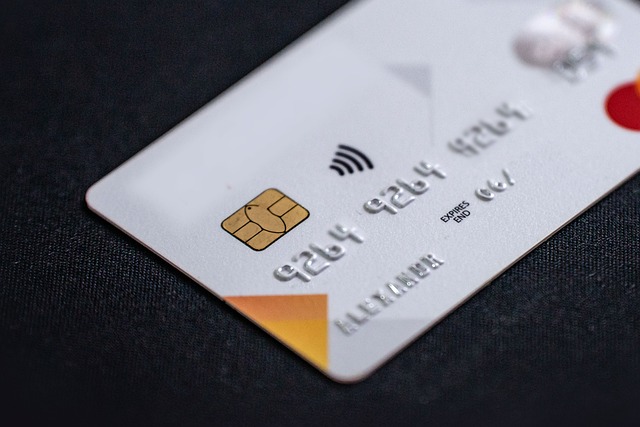This text compares two alternative business financing methods: Purchase Order (PO) financing and invoice factoring. PO financing provides immediate funding for specific orders, beneficial for businesses with consistent sales cycles, while invoice factoring offers a flexible solution by selling invoices at a discount for quick cash flow, suitable for those with unpredictable or rapidly growing operations. Both have unique pros and cons, with PO financing maintaining control over invoicing and accounting processes, and factoring providing faster access to funds but potentially higher costs. Businesses should carefully consider their cash flow needs, financial goals, and risk tolerance before deciding between these two methods, ensuring an informed choice tailored to their specific circumstances.
Navigating cash flow challenges? Explore purchase order (PO) financing or invoice factoring to supercharge your business. This comprehensive guide compares these two financial tools, helping you make an informed decision based on your unique needs. Discover the intricacies of PO financing and factoring, understand their key differences, and unlock their respective advantages. Whether enhancing liquidity or optimizing payment terms, learn how to choose between these innovative solutions for sustainable growth.
- Understanding Purchase Order (PO) Financing and Invoice Factoring
- Key Differences Between PO Financing and Factoring
- Advantages of Purchase Order Financing
- Benefits of Invoice Factoring
- Making the Right Decision: Evaluating Your Business Needs
Understanding Purchase Order (PO) Financing and Invoice Factoring

Purchase order (PO) financing and invoice factoring are two distinct financial strategies that businesses can use to manage their cash flow, but they operate in very different ways. PO financing involves a bank or financier paying for goods or services upfront based on a purchase order from a customer. This allows businesses to get immediate funding for orders, alleviating the pressure of waiting for payment from clients. On the other hand, invoice factoring is a process where a business sells its invoices (or accounts receivable) to a third-party factor at a discount. The factor then collects the full amount due from the customer, minus fees and discounts.
Comparing PO financing and factoring, the key differences lie in timing, cost, and scope. PO financing provides immediate funding tied to specific orders, making it ideal for businesses with consistent high-value orders. However, it may involve higher interest rates or fees compared to factoring. Factoring offers a more flexible solution by allowing businesses to sell all their invoices, not just those associated with specific orders. It’s particularly beneficial for companies dealing with longer payment terms or inconsistent cash flow from customers. Nevertheless, factoring can be costlier due to the discounts and fees involved, which vary based on industry standards and risk profiles.
Key Differences Between PO Financing and Factoring

When deciding between purchase order (PO) financing and invoice factoring, understanding their key differences is crucial for businesses looking to optimize cash flow. PO financing involves funding against an upcoming invoice, where a lender pays the supplier on your behalf and you repay them once the customer makes payment. This method preserves the traditional accounts receivable process but requires creditworthiness to access funds.
In contrast, factoring offers a more direct approach by selling your invoices to a third-party factor at a discount. The factor handles collections and assumes the risk of non-payment, providing immediate cash flow. While this can be faster, it may also involve higher fees and interest rates compared to PO financing, reflecting the assumption of additional financial risk by the factoring company.
Advantages of Purchase Order Financing

Purchase order (PO) financing offers several advantages when compared to invoice factoring, especially for businesses looking for flexible funding options. One key benefit is that it allows companies to maintain control over their accounts receivable and invoicing process. With PO financing, a business can secure funding based on its existing orders and contracts, enabling them to manage cash flow without involving external factors or changing their regular billing practices.
Additionally, PO financing often provides longer-term working capital, as the funding is tied to specific purchase orders and delivery schedules. This feature can be advantageous for businesses with seasonal fluctuations in sales or those dealing with long-term projects, ensuring a steady cash flow throughout the project’s lifecycle. Compared to factoring, which involves immediate payment for invoices, PO financing offers a more gradual release of funds, aligning with the business’s natural sales cycle and promoting sustainable growth.
Benefits of Invoice Factoring

Invoice factoring offers several advantages when compared to purchase order (PO) financing, especially for small and medium-sized businesses. One of its key benefits is immediate cash flow. Instead of waiting for customers to settle their invoices, factoring provides access to funds within 24 hours, enabling businesses to cover immediate expenses, invest in growth opportunities, or manage cash flow gaps. This can be particularly valuable in industries with longer payment terms or those experiencing slow-paying clients.
Another advantage is the absence of debt. Unlike PO financing, where businesses incur loans that need repayment with interest, factoring is a sale of invoices at a discount. It does not create long-term debt obligations, making it an attractive option for companies looking to maintain financial flexibility and avoid complex repayment structures. This method also simplifies accounting processes as it involves a straightforward sale and purchase of accounts receivable.
Making the Right Decision: Evaluating Your Business Needs

When deciding between purchase order (PO) financing and invoice factoring, evaluating your business needs is a crucial first step. Both options offer unique advantages that can cater to distinct financial scenarios. PO financing is ideal for businesses seeking to optimize their cash flow by accelerating payment on pending orders, making it particularly beneficial for companies with consistent, predictable sales cycles.
On the other hand, invoice factoring suits operations that require immediate access to working capital, often due to unforeseen circumstances or rapid growth. By selling invoices at a discount, factoring provides quick funding but may come with higher costs. Comparing PO financing and factoring against your business’s financial goals, cash flow patterns, and risk tolerance will help you make an informed decision tailored to your unique requirements.






